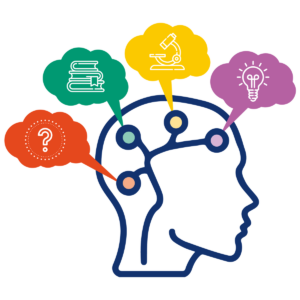User Ideas / Prospects

Engineering thinking is a systematic approach to problem-solving that draws on principles of engineering to address complex issues efficiently and effectively. It involves critical and analytical thinking, creativity, and a structured methodology to design, test, and implement solutions.
Key Components of Engineering Thinking
Problem Identification and Analysis
- Defining the Problem: Clearly identifying the problem to understand its scope and impact.
- Analyzing Requirements: Determining the needs and constraints associated with the problem to guide the solution process.
Research and Data Collection
- Gathering Information: Collecting relevant data and researching existing solutions and technologies.
- Benchmarking: Comparing current solutions to industry standards and best practices to identify areas for improvement.
Idea Generation and Conceptualization
- Brainstorming: Encouraging creative thinking to generate a wide range of potential solutions.
- Concept Development: Refining ideas into feasible concepts that can be further analyzed and tested.
Design and Prototyping
- Detailed Design: Creating detailed plans and specifications for the chosen solution.
- Prototyping: Building prototypes or models to test and refine the design.
Testing and Evaluation
- Testing: Conducting rigorous tests to evaluate the performance and reliability of the solution.
- Analysis and Feedback: Analyzing test results and gathering feedback to make necessary adjustments and improvements.
- Final Production: Transitioning from prototype to final product or solution, ensuring it meets all requirements.
- Deployment: Implementing the solution in the real-world context and monitoring its performance.
Iteration and Continuous Improvement
- Feedback Loop: Continuously collecting feedback and performance data to identify areas for further enhancement.
- Iterative Design: Making iterative improvements to refine and optimize the solution over time.
Applications of Engineering Thinking in Everyday Life
Home Improvement Projects: Using systematic problem-solving to plan and execute home renovations efficiently.
Personal Finance Management: Applying analytical skills to create and maintain budgets, and to make informed investment decisions.
Workplace Efficiency: Implementing engineering principles to streamline workflows, enhance productivity, and foster innovation.
Benefits of Engineering Thinking
Enhanced Problem-Solving Skills: Developing a structured approach to tackle complex issues.
Improved Creativity and Innovation: Encouraging creative thinking and the exploration of diverse solutions.
Better Decision-Making: Making informed decisions based on thorough analysis and testing.
ConclusionEngineering thinking equips individuals with the skills and mindset to approach problems methodically and creatively. Whether in professional settings or everyday life, adopting engineering thinking can lead to more effective solutions and continuous improvement.
Engineering thinking involves systematic problem-solving and critical thinking skills that are invaluable in everyday life. This article explores why these skills are essential for everyone.
Understanding Engineering Thinking
What is Engineering Thinking?: Engineering thinking is a systematic approach to problem-solving that draws on principles of engineering to address complex issues efficiently and effectively. It involves critical and analytical thinking, creativity, and a structured methodology to design, test, and implement solutions.

How Engineering Thinking Helps Individuals Grow and Become Smarter in Life
Engineering thinking is a powerful approach to problem-solving that equips individuals with skills and habits that foster personal growth and intelligence. This article explores how adopting engineering thinking can help individuals become smarter and more capable in various aspects of their lives.
Enhancing Problem-Solving Skills By Systematic Approach to Challenges
Example: When faced with a complex project at work, breaking it down into smaller tasks and systematically tackling each one leads to effective and efficient solutions.

Critical Thinking and Analysis
Example: Analyzing financial statements and market trends before making investment decisions helps in choosing the best options.

Encouraging Creative Solutions
Example: Designing a unique marketing strategy for a new product by combining traditional methods with innovative digital approaches.
Design Thinking
Example: Creating a user-friendly mobile app interface by considering user feedback and design principles.

Learning from Failure
Example: Learning from a failed business venture and using the insights to start a more successful one.
Embracing Iteration and ImprovementBy Continuous Improvement: Engineering thinking involves iterating solutions based on feedback and performance, leading to continuous improvement.
Effective Communication with Clear and Precise Communication: Engineers learn to communicate complex ideas clearly and precisely, a skill that is valuable in any context.
Example: Presenting a well-organized report to stakeholders, clearly explaining the technical details and implications.
Collaborative Teamwork
Team Collaboration: Engineering projects often require collaboration, teaching individuals how to work effectively in teams.
Example: Leading a project team to develop a new product, ensuring that everyone’s expertise is utilized and coordinated.
Curiosity and Continuous Learning
Staying Updated: Engineering thinking fosters a mindset of curiosity and continuous learning, encouraging individuals to stay updated with the latest advancements and knowledge.
Example: Regularly attending workshops and courses to stay informed about the latest developments in one’s field.
Adapting to Technological Changes
Embracing Technology: Understanding engineering principles helps individuals adapt to and leverage new technologies effectively.
Example: Learning to use new software tools to improve productivity and efficiency in daily tasks.
